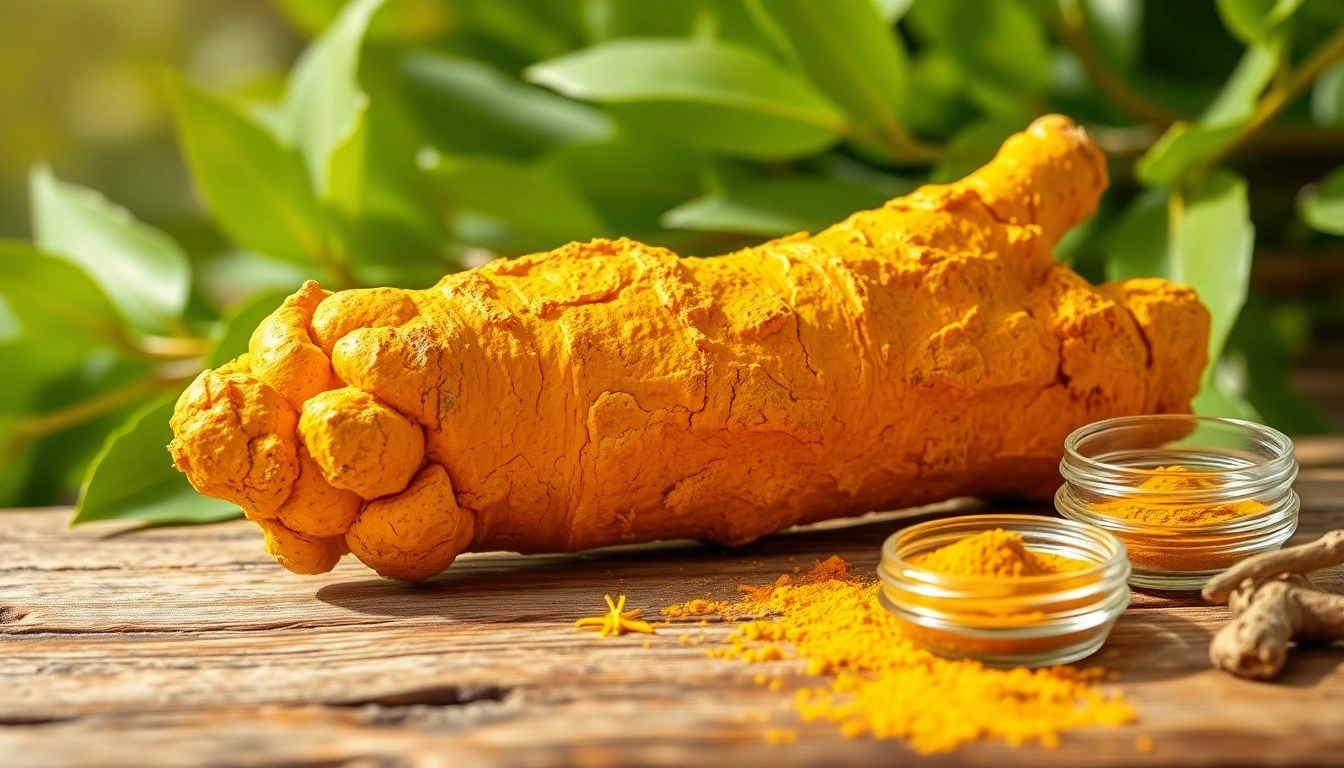1. Understanding Turmeric Root
1.1 The Botanical Background
Turmeric, scientifically known as Curcuma longa, belongs to the ginger family, Zingiberaceae. The plant is native to Southeast Asia and is primarily cultivated in India, where it has been a staple of local cuisine and traditional medicine for thousands of years. The part of the turmeric that is most commonly consumed and used in various preparations is the rhizome, which is the underground stem of the plant. Upon harvesting, these rhizomes are typically boiled, dried, and ground into the vibrant orange-yellow powder we recognize as turmeric.
1.2 Traditional Uses of Turmeric Root
Turmeric root has a rich history within traditional Asian medicine, particularly in Ayurveda and Traditional Chinese Medicine (TCM). In Ayurveda, it has been used as a spice and medicinal herb for its purported health benefits, including its role in digestion and its ability to help purify the blood. TCM practitioners utilize turmeric for its anti-inflammatory properties and its ability to support liver health. It is often recommended for conditions ranging from skin ailments to digestive disorders.
1.3 Cultural Significance of Turmeric Root
Apart from its health benefits, turmeric plays a significant cultural role in various traditions. In India, turmeric is an essential part of religious ceremonies and rituals. It symbolizes purity and prosperity and is often applied to the bride and groom in traditional wedding ceremonies. Its bright color and earthy aroma have made it a beloved component not only in cooking but also in art and decoration across South Asian cultures.
2. Health Benefits of Turmeric Root
2.1 Anti-Inflammatory Properties
One of the most extensively researched properties of turmeric is its anti-inflammatory capability. The active compound in turmeric, curcumin, has been shown to inhibit several molecules that play significant roles in inflammation, making it potentially effective in managing conditions like arthritis, cardiovascular disease, and even neurodegenerative diseases. Studies suggest that curcumin can help reduce the severity of inflammation-related diseases by modulating the inflammatory pathways in the body.
2.2 Antioxidant Effects of Turmeric Root
Another crucial benefit of turmeric root is its powerful antioxidant properties. Curcumin’s structure allows it to combat free radicals—unstable molecules that contribute to cellular damage and aging. Regular incorporation of turmeric into your diet can help enhance the body’s antioxidant capacity, providing a defense against oxidative stress. Furthermore, curcumin helps to boost the activity of the body’s own antioxidant enzymes, making it a potent ally in the battle against chronic diseases.
2.3 Turmeric Root in Chronic Disease Prevention
Several studies have indicated that regular turmeric consumption may aid in the prevention of various chronic diseases. For instance, research shows that curcumin may lower the risk of coronary artery disease by improving the endothelial function of blood vessels. It also appears effective in managing blood sugar levels, leading to potential applications in diabetes prevention and management. The cumulative effect of these benefits presents turmeric as a valuable dietary supplement in holistic health practices.
3. Incorporating Turmeric Root into Your Diet
3.1 Culinary Uses of Fresh and Dried Turmeric Root
When it comes to culinary applications, turmeric root is incredibly versatile. Fresh turmeric can be chopped and added to smoothies, stews, and soups, lending a unique flavor and nutritional boost. On the other hand, dried turmeric is a staple in spice blends, especially curry powder, and can be sprinkled on vegetables or used in marinades. To maximize the benefits of turmeric, it is often recommended to combine it with black pepper, which enhances the absorption of curcumin by the body.
3.2 Popular Recipes Featuring Turmeric Root
Many recipes can be enhanced with the addition of turmeric. Below are a few popular options:
- Golden Milk: A soothing blend of warm milk (or plant-based milk), turmeric, black pepper, and honey, perfect for relaxation.
- Turmeric Roasted Vegetables: Toss your favorite root vegetables with olive oil, turmeric, salt, and pepper; roast until golden and caramelized.
- Turmeric Chicken Stir-Fry: Marinate chicken in turmeric, ginger, and garlic before stir-frying with vegetables.
3.3 Tips for Preparing Turmeric Root
When handling fresh turmeric root, it’s wise to use gloves as the bright yellow pigment can stain skin and surfaces. To prepare, simply peel and slice the root. If using dried turmeric, it’s best applied with a fat (like oil) to facilitate the absorption of curcumin. Always consider adding black pepper to recipes, as its piperine content significantly enhances curcumin bioavailability, thus maximizing health benefits.
4. Potential Side Effects and Considerations
4.1 Common Side Effects of Turmeric Root
While turmeric is generally safe for consumption, some people may experience side effects, especially in high doses. Common side effects include digestive issues such as nausea, diarrhea, or stomach upset. Individuals with gallbladder disease should consult a healthcare provider before incorporating significant amounts of turmeric into their diets, as it can exacerbate issues related to bile production.
4.2 Interactions with Medications
Turmeric can potentially interact with certain medications, particularly blood thinners, and medications used for diabetes and acid reflux. Individuals taking anticoagulants should be cautious as turmeric may enhance the effects of these drugs, leading to possible bleeding complications. As such, it is prudent to consult a healthcare professional before beginning any supplement routine involving turmeric, especially for those on prescribed medications.
4.3 Dosage Recommendations for Turmeric Root
For general health purposes, a typical dosage of turmeric root ranges from 500 mg to 2000 mg of curcumin per day. As whole turmeric root itself contains only about 3-5% curcumin, you might need to consume a substantial amount of fresh or dried turmeric to achieve therapeutic effects. It’s beneficial to start with lower dosages to assess tolerance and gradually increase intake while monitoring for any adverse reactions.
5. Where to Buy Quality Turmeric Root
5.1 Sourcing Fresh Turmeric Root
To obtain fresh turmeric, local farmers’ markets and specialty grocery stores are the best options. Look for firm, smooth roots that are free from blemishes or soft spots. If purchasing turmeric root online, opt for reputable vendors that provide quality guarantees. For those interested in convenience, dried turmeric powder is widely available in supermarkets and health food stores.
5.2 Online vs. Local Markets for Turmeric Root
Purchasing turmeric root online can be advantageous due to the variety and availability of organic and specialty products. Websites like Turmeric Root provide quality products directly sourced from trusted suppliers. However, shopping at local markets allows you to see and feel the product before making a purchase, ensuring freshness and quality.
5.3 Selecting Organic Turmeric Root Products
When selecting turmeric, consider choosing organic options to avoid pesticides and synthetic fertilizers. Organic turmeric is often more potent, preserving the plant’s natural properties due to its unaltered growing conditions. Checking for certifications from trusted organic organizations can provide additional assurance of product quality.



